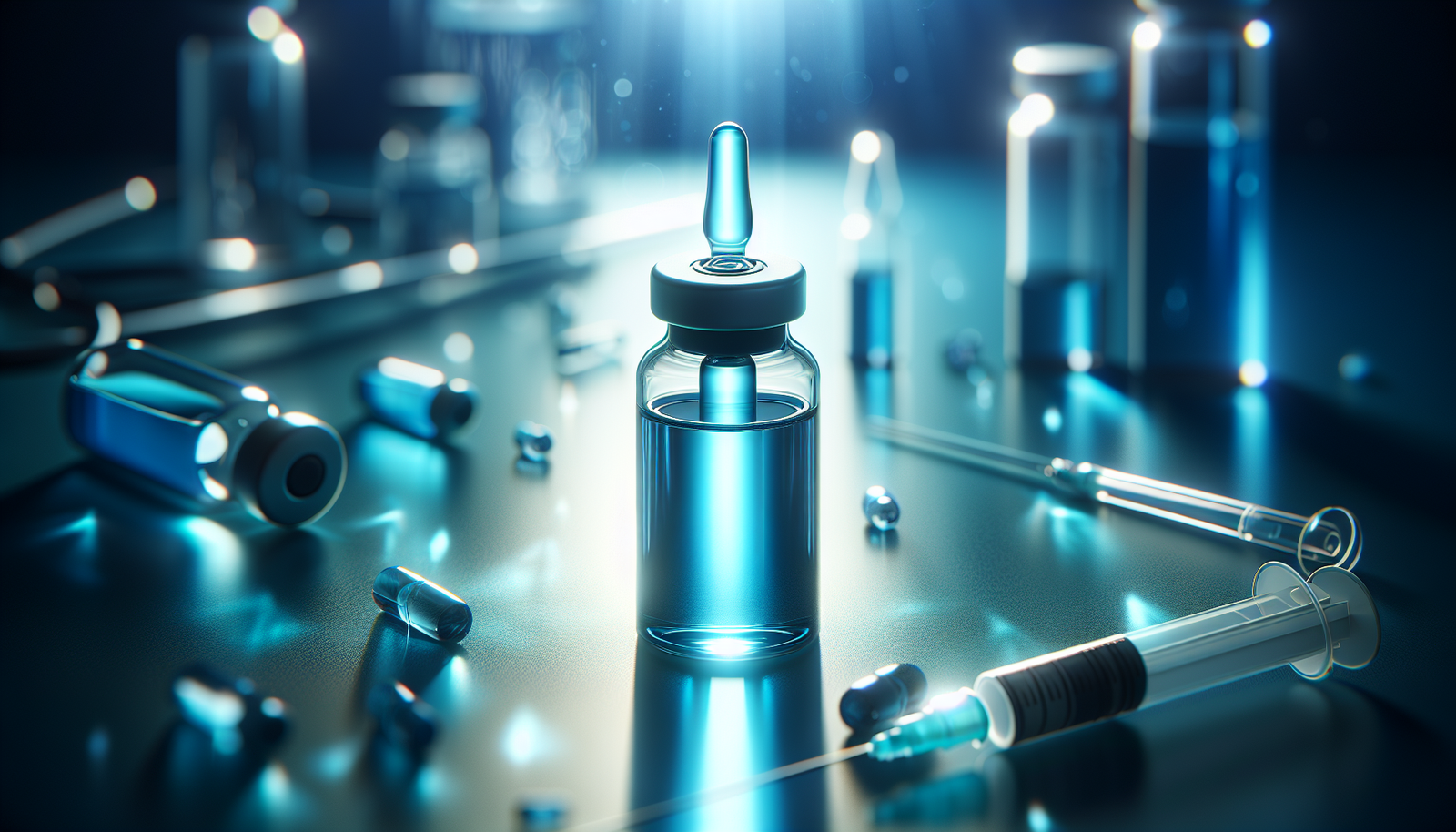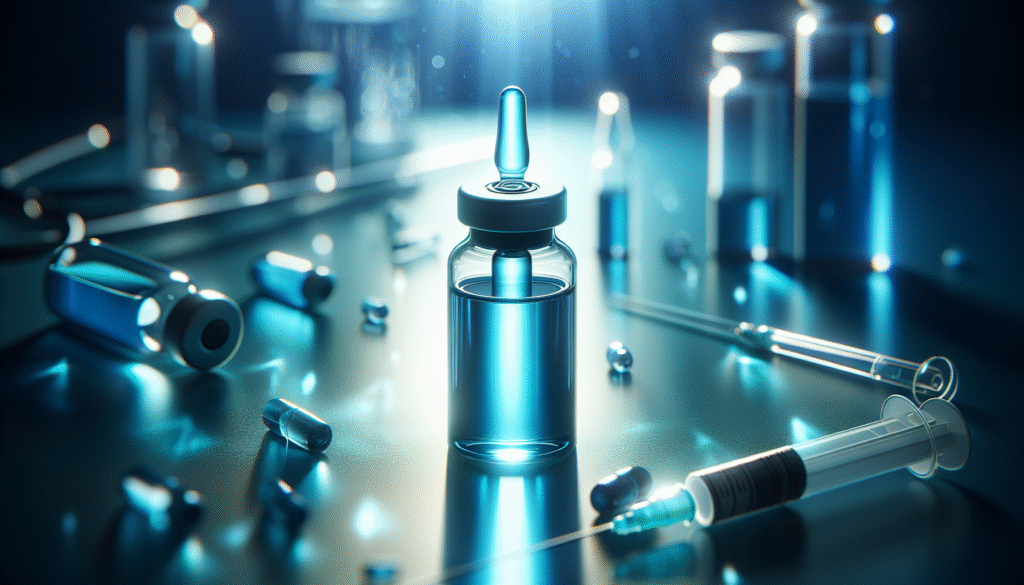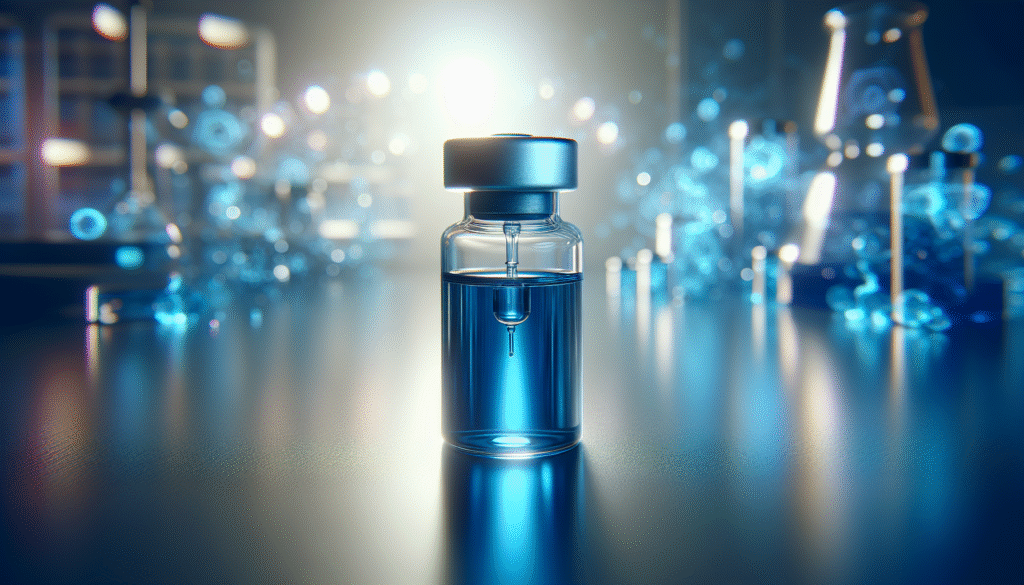
Have you ever wondered how certain compounds can influence cellular processes and enhance therapeutic outcomes? The intersection of chemistry and biology reveals fascinating insights, particularly in the case of methylene blue and its synergy with phototherapy. In this article, you will gain a comprehensive understanding of these two formidable therapeutic options, how they interact, and their implications for modern medicine.

Understanding Methylene Blue
Methylene blue, a synthetic dye with a rich history, finds its roots in both medical and scientific applications. Originally developed as a dye in the 19th century, it eventually gained recognition for its potential therapeutic benefits.
Historical Context
You may find it interesting that methylene blue was initially employed to treat malaria. Its antimicrobial properties resonated through the years, prompting researchers to explore its broader applications. Over time, methylene blue has been studied for its effects on neurological function, oxidative stress, and even as a treatment for methemoglobinemia.
Chemical Composition
At its core, methylene blue is a cationic phenothiazine dye, with the molecular formula C16H18ClN3S. Its unique structure allows it to undergo redox reactions, making it a versatile compound in biological systems.
Methylene blue exists in two forms: the leuco form (reduced) and the oxidized form. The leuco form is colorless and less active, while the oxidized form is the blue dye associated with its therapeutic effects.
Mechanistic Pathways
Understanding the mechanisms of action for methylene blue reveals its potential. You may be surprised to learn that it exerts its effects through several pathways:
-
Antioxidant Activity: Methylene blue acts as an antioxidant by scavenging reactive oxygen species (ROS), which can cause damage to cellular components if not regulated properly.
-
Mitochondrial Function: This compound plays a role in mitochondrial respiration, enhancing ATP production. By doing so, it may improve cellular energy metabolism, particularly in compromised tissues.
-
Neuroprotective Effects: Its ability to inhibit the aggregation of tau proteins and protect neurons is crucial in neurodegenerative conditions.
These pathways demonstrate how methylene blue acts at the cellular level, potentially leading to various therapeutic applications.
Phototherapy: An Overview
Phototherapy harnesses light to modulate biological processes, and it has gained prominence in treating a range of conditions. This section will elucidate the principles behind phototherapy and its therapeutic implications.
Mechanism of Action
Phototherapy primarily works by utilizing light to stimulate cellular activity. Light, particularly in specific wavelengths, can penetrate skin and tissues, promoting cellular processes.
-
Biostimulation: When light is applied, it can accelerate healing and cellular regeneration. This is particularly useful for treating wounds and skin conditions.
-
Pain Relief: Phototherapy can also alleviate pain by reducing inflammation and promoting blood flow to affected areas.
-
Mood Enhancement: Beyond the physical realm, exposure to certain types of light can positively influence mood and foster mental well-being. This is commonly observed in Seasonal Affective Disorder (SAD) treatments.
Types of Phototherapy
Different types of phototherapy utilize varying wavelengths and techniques, each tailored for specific therapeutic needs:
-
Low-Level Laser Therapy (LLLT): Employs low-power lasers to stimulate tissue repair and reduce inflammation.
-
Intense Pulsed Light (IPL): Broad-spectrum light aimed at skin treatment, specifically for conditions like acne or pigmentation adjustments.
-
Ultraviolet (UV) Therapy: Utilizes UV light to treat skin disorders like psoriasis and eczema by modulating immune responses within the skin.
These modalities illustrate the versatility of phototherapy, but their effectiveness often hinges on the biological compounds they are used with.
The Synergy Between Methylene Blue and Phototherapy
You might recognize that when certain treatments are paired, their effects can be amplified. The partnership between methylene blue and phototherapy is a prime example of this phenomenon, showcasing how these modalities can work synergistically to enhance therapeutic outcomes.
Mechanistic Interactions
The interaction between methylene blue and different forms of phototherapy can leverage their respective strengths.
-
Enhanced Absorption: Methylene blue, when illuminated by specific wavelengths of light, demonstrates enhanced absorption and activation, leading to increased ROS generation. This can boost the protective effects and oxidative stress mitigation the compound offers.
-
Targeted Therapy: By utilizing phototherapy to target specific tissues, methylene blue can be delivered more effectively. This is particularly beneficial in conditions requiring localized treatment, such as certain cancers or wounds.
-
Complementary Effects: The properties of methylene blue as a neuroprotective agent can complement phototherapy’s ability to stimulate healing in brain tissues and chronic pain conditions.
Clinical Applications
The combined applications of methylene blue and phototherapy demonstrate their potential across various medical domains:
-
Neurodegenerative Disorders: Research suggests that this combination may help in the management of diseases like Alzheimer’s and Parkinson’s by protecting neurons and enhancing cognitive functions.
-
Wound Healing: The use of methylene blue in conjunction with phototherapy can accelerate tissue repair, reduce bacterial load, and promote angiogenesis, leading to faster wound healing processes.
-
Oncology: Methylene blue’s unique properties can make it an adjunct in cancer therapies, particularly when combined with photodynamic therapy (PDT). The combination can improve tumor responses while minimizing damage to surrounding healthy tissues.
Methylene Blue in Photodynamic Therapy
Photodynamic therapy (PDT) is a treatment modality that utilizes light-sensitive compounds, such as methylene blue, along with light exposure to target and destroy malignant cells. You may find the following components essential to understanding how this therapy functions.
Mechanism of Photodynamic Therapy
PDT operates on a straightforward principle: the interaction of light, a photosensitizer (like methylene blue), and oxygen. When exposed to specific light wavelengths, the photosensitizer becomes excited and generates reactive oxygen species. These ROS lead to cell death, particularly in targeted tumor cells.
Steps in Photodynamic Therapy
-
Administration of the Photosensitizer: Methylene blue is introduced into the body and can be selectively absorbed by abnormal tissues, particularly cancer cells.
-
Light Activation: Once the photosensitizer is accumulated, the specific wavelength of light is delivered to the area. This causes methylene blue to become activated.
-
Production of Reactive Oxygen Species: The activated molecule interacts with nearby oxygen, creating ROS that induce apoptosis (programmed cell death) in the affected cells.
This method allows for precise targeting, potentially leading to fewer side effects than traditional chemotherapy or radiation therapies.
| Step | Description |
|---|---|
| 1 | Administration of methylene blue into the body. |
| 2 | Exposure of the targeted area to a specific wavelength of light. |
| 3 | Activation of methylene blue leading to ROS generation, resulting in cell death. |
Clinical Applications of PDT with Methylene Blue
The application of PDT using methylene blue has shown promise in various conditions:
-
Skin Cancers: PDT is primarily utilized to treat superficial non-melanoma skin cancers effectively, with evidence supporting its use in basal cell carcinoma and squamous cell carcinoma.
-
Oral Lesions: In oral oncology, methylene blue can target precancerous lesions, demonstrating the capacity to prevent progression to invasive disease.
-
Photoinactivation of Bacteria: Beyond cancer, the antimicrobial properties of methylene blue are harnessed to treat infections, particularly in wounds. Studies suggest that PDT can effectively inactivate pathogens, reducing infection risks.

Safety and Side Effects
While methylene blue and phototherapy show immense potential, it is essential to consider safety and side effects associated with both modalities for informed decision-making.
Methylene Blue Safety Profile
Methylene blue is generally regarded as safe; however, some side effects may arise:
-
Staining: You may encounter staining of skin and bodily fluids, due to its dye properties.
-
Allergic Reactions: Allergic responses can occasionally occur, necessitating careful monitoring during administration.
-
Drug Interactions: Be mindful of potential interactions with certain medications, particularly those affecting serotonin levels, as methylene blue can act as a monoamine oxidase inhibitor (MAOI).
Phototherapy Safety Considerations
While generally low-risk, phototherapy still necessitates precaution:
-
Skin Sensitivity: Some individuals may exhibit heightened sensitivity following treatment, leading to temporary redness or irritation.
-
Long-term Risks: Prolonged exposure to UV light may increase the risk of skin cancers, emphasizing the need for a careful balance between therapeutic benefit and risk management.
-
Visual Monitoring: Protective measures, especially for the eyes, should be guaranteed during treatments involving light exposure.
Future Directions
the scientific community continues to explore the potentials of methylene blue and phototherapy, paving pathways towards innovative therapeutic strategies.
Research Opportunities
-
Combination Therapies: Ongoing clinical trials are assessing the efficacy of methylene blue in combination with various light modalities, seeking to optimize treatment protocols for conditions like depression, neurodegeneration, and chronic pain.
-
Personalized Medicine: As research progresses, personalized treatment plans incorporating methylene blue and phototherapy may enhance outcome predictability based on individual biological responses.
-
Other Applications: Studies are underway investigating other applications, such as the use of methylene blue in combination with phototherapy for conditions like diabetes and metabolic disorders.
Clinical Implications
As the understanding of the interactions between methylene blue and phototherapy deepens, clinicians may discover novel applications in treating complex medical conditions. continuous research is vital to clarify optimal dosages, treatment schedules, and patient selection criteria, ultimately leading to improved patient outcomes.
Conclusion
The combination of methylene blue and phototherapy represents a fascinating convergence of science and clinical practice, unraveling layers of complexity that promise clinical benefits across a spectrum of conditions. Understanding the mechanics behind these modalities empowers you to appreciate their contributions to advancing healthcare.
In an era where precision medicine gains momentum, the potential for methylene blue and phototherapy to reshape therapeutic landscapes cannot be understated. Your awareness of these developments may inspire a more proactive approach towards health and wellness, as well as a curiosity for the ongoing evolution of treatment methodologies. As research continues to unfold, the opportunities for enhanced patient care through innovating therapies remain significant.